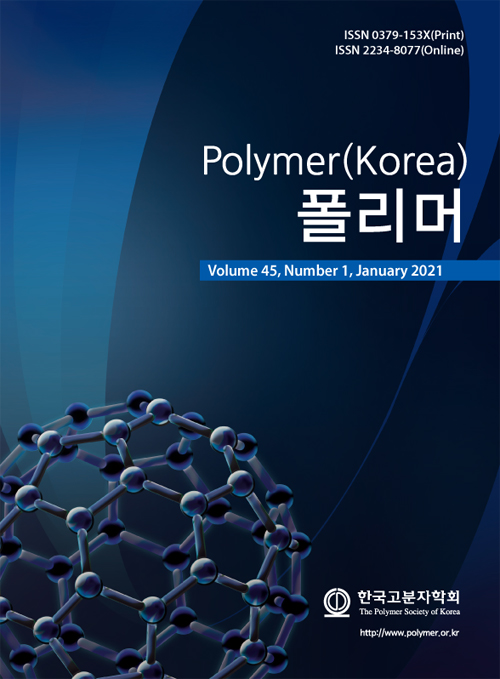- Comfort Property of the Polyurethane Composite Foams Including Hydrophilic and Hydrophobic Fumed Silica Nanoparticles
Department of Chemical Engineering, University of Seoul, 163 Seoulsiripdae-ro, Dongdaemun-gu, Seoul 02504, Korea
- 표면처리 실리카 나노입자를 포함하는 폴리우레탄 폼의 안락 특성
서울시립대학교 화학공학
Flexible polyurethane foams are mainly used in the automobile industry for seat cushioning and sound adsorbing materials. The polyurethane composite foams were fabricated by applying hydrophobic and hydrophilic fumed silica nanoparticles in order to examine the comfort properties of the polyurethane composite foams. In the case of hydrophobic silica (Aerosil-R972), there was little change in morphology and comfort property, but hydrophilic silica (Aerosil-300) revealed higher changes in morphology and comfort properties than the hydrophobic case. Low compatibility of the hydrophilic silica nanoparticles with the polyurethane matrix resulted in larger a cavity and pore sizes compared to the hydrophobic silica case. As a result, the hydrophilic silica influenced much more on the morphology and comfort properties of the foams than the hydrophobic silica case. The sag factor and hysteresis loss were changed about 38% and 10%, respectively by applying 1.5wt% of hydrophilic fumed silica nanoparticles in fabrications of flexible polyurethane composite foams.
자동차 산업에서 폴리우레탄 폼은 주로 쿠션재, 흡음재로 사용된다. 본 연구에서는 연질 폴리우레탄 폼에 표면 특성이 다른 두 종류(hydrophilic, hydrophobic)의 실리카 나노입자를 첨가하여, 안락 특성에 미치는 영향을 조사하였다. 소수성 실리카 입자(Aerosil-R972)는 우레탄 사슬과의 우수한 접착으로 인해 내부 형태학과 안락 특성의 변화가 거의 없었다. 반면, 친수성 실리카 입자(Aerosil-300)는 우레탄 사슬과의 불안정한 접착성으로, 폼의 강성이 저하되는 결과를 보였다. 이로 인해, 공동과 미세구멍의 크기가 증가했고 친수성 실리카 표면이 미세구멍의 생성을 유도하는 역할을 하게 되어 공동 당 평균 미세구멍의 수가 증가하였다. 이러한 형태학적 특성에 따라 친수성 입자의 함량이 증가함에 따라 이력손실과 꺼짐인자는 증가하는 경향을 보였다. 결과적으로, 친수성 입자를 1.5wt% 첨가할 때, 이력손실 10% 증가와 꺼짐인자 38% 증가의 결과를 나타내었다.
Keywords: polyurethane foam, silica, surface characteristic, sag factor, morphology
- Polymer(Korea) 폴리머
- Frequency : Bimonthly(odd)
ISSN 0379-153X(Print)
ISSN 2234-8077(Online)
Abbr. Polym. Korea - 2023 Impact Factor : 0.4
- Indexed in SCIE
 This Article
This Article
-
2021; 45(1): 164-170
Published online Jan 25, 2021
- 10.7317/pk.2021.45.1.164
- Received on Oct 28, 2020
- Revised on Nov 24, 2020
- Accepted on Dec 2, 2020
 Correspondence to
Correspondence to
- Jung Hyeun Kim
-
Department of Chemical Engineering, University of Seoul, 163 Seoulsiripdae-ro, Dongdaemun-gu, Seoul 02504, Korea
- E-mail: jhkimad@uos.ac.kr










 Copyright(c) The Polymer Society of Korea. All right reserved.
Copyright(c) The Polymer Society of Korea. All right reserved.